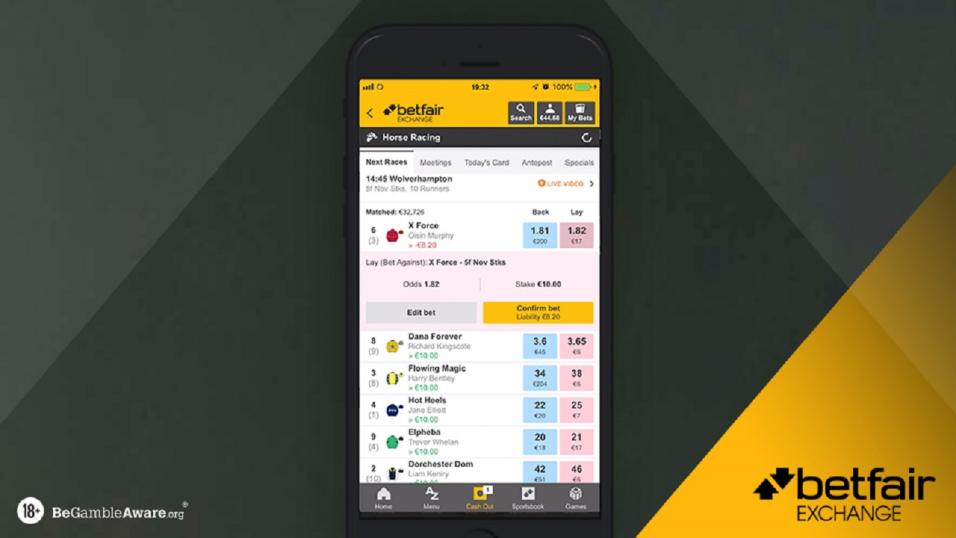Scalping

· A simple to use betting technique, 'Scalping' is a betting method which relies on taking advantage of small, short-term price variations and changes across a betting exchange, such as the Betfair Exchange. This approach allows the bettor to make small but frequent gains across various markets, by exploiting the differeces in the available odds.
Scalping is the process of capitalising on minor, short-term price changes within the Exchange market to make small profits, with a relatively low risk.
It involves offering bets on both sides of an active market and hoping to be matched at slightly different prices.
To execute a profitable trade it's always best to start with the end in mind, considering the possible outcomes before a bet is even placed.
Even though the profits are small, you can make a high volume of trades in a short time. For example, you may only make £3 profit per trade, but it’s possible do this on every market every day hundreds/thousands of times on any given day, using the correct software.
Getting started
The first thing to do when starting scalping is to decide which market is best for you.
Horse racing is the most common choice, but scalping can be done with almost any sport on Betfair. It is best to become familiar with the market you are trading in before placing any stakes.
It is possible to just watch how the odds fluctuate leading up to, and during an event. This will give you a good idea of how much you can stake without taking on too much risk, and when the best time to place your bets is.
Scalping during an event comes with more risk. For horse racing, you run the risk of having a horse you have just bet on falling at the next hurdle before you can exit your position, and therefore losing you your entire stake.
How does it work?
Scalping is a short-term "in and out" trading strategy, with the aim to take a very small profit from minor price movements.
To successfully complete a scalp, you must place two opposing bets against each-other, usually one or two price increments apart, in order to guarantee a profit.
You can do this by offering a back price that is slightly lower than market price, wait for it to be matched, and then taking the slightly higher lay price. You can then use software to ensure an even return across all outcomes
Popular events with large betting volumes are most suited to scalping methods, such as the example below.
A Scalping example
Horse racing is a market that is favoured by scalpers due to the high volume, fast-moving markets which come with it.
For example, if you place both a back and a lay bet on the same horse, this means you are betting that the horse will win, and betting that the same horse will not win.
It doesn’t matter whether you place your back bet or lay bet first, the important thing is to make sure you are ‘offering’ a price. However, backing first would mean you didn’t have a big liability that you’re trying to get out of, which may be best for beginners.
Once this price is matched, you can ‘sell’ the bet back to the market to make a profit. This is usually just 1-5 ‘ticks’ difference, for example, backing at 3.25 and laying at 3.20.
A scalping example on football:
Manchester City are trading at 2.00 to win a game.
You offer a back bet of £200 on Man City at 2.02, hoping for a touch of market movement, and a similar Lay offer of £200 at 2.00.
Once both offerings are matched, you will have a potential return of £400 if Man City don't win, but a return of £404 if they do win (excluding commission). So, in this case, Man City are a "green" selection for £4, without any liability.
You can use software to "green up" your book and spread that £4 potential profit evenly across the three selections in the market.
"Scalps" such as these can be done repeatedly in a liquid market to build your overall profit on the event.
Scalping is all about predicting rapid movements in price in a market. For example, if a well-known broadcaster provides a tip on a horse race, this will often cause more bets to be placed on the horse and therefore cause the odds to fluctuate.
Scalpers will get in early and correctly predict the price movement. Then they exit the market as fast as possible in order to limit exposure and risk.
Scalping software (link to Betfair vendor apps page)
Advanced trading software is usually used by players who want to scalp, due to the added ease of placing bets and removing risk from your book.
The main advantage of using specialised software comes down to the speed at which it enables you to place your bets.
The ‘speed of exit’ is important to scalping and that is something that scalping software offers and is worth the investment if you are committed to getting started with scalping.
You can opt to purchase scalping software and pay a monthly or annual fee for using it.
Scalping in-play
There are advantages and disadvantages to scalping either before an event, or scalping in-play.
Scalping in-play is more of a high-risk, high-reward strategy. You can judge this for yourself by observing the fluctuation of odds over the course of an event.
There is much more variance of odds during the event than when betting pre event.
Before an event, a change in odds is often due to a quantifiable event occurring, such as one of the horses being injured before a race. The odds will then adjust to this news and eventually settle at the new price.
If you are very knowledgeable about horse racing and able to quickly take advantage of news about a race before it starts, you can be profitable scalping before an event.
However, the markets tend to be smaller leading up to an event, and grow as the start of the event approaches.
Most bets are placed just before the start of a race, causing new odds fluctuations. This is the time that many scalpers choose to place their bets.
It is always best to do your research, understand market movements and how different sports move in different ways before committing to scalping.















